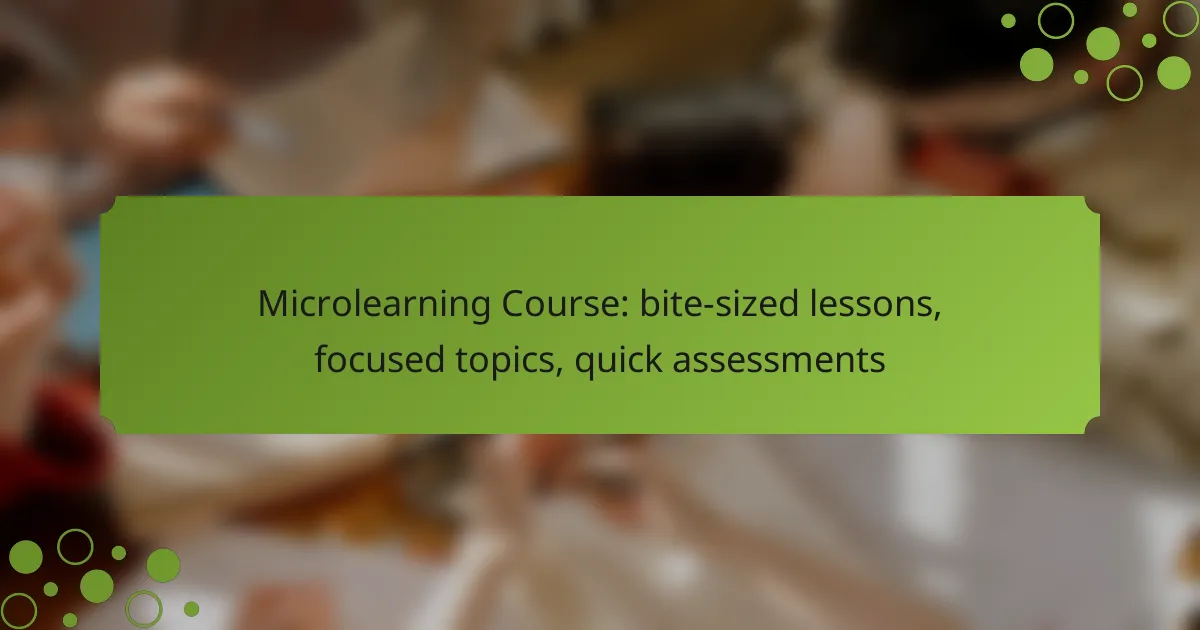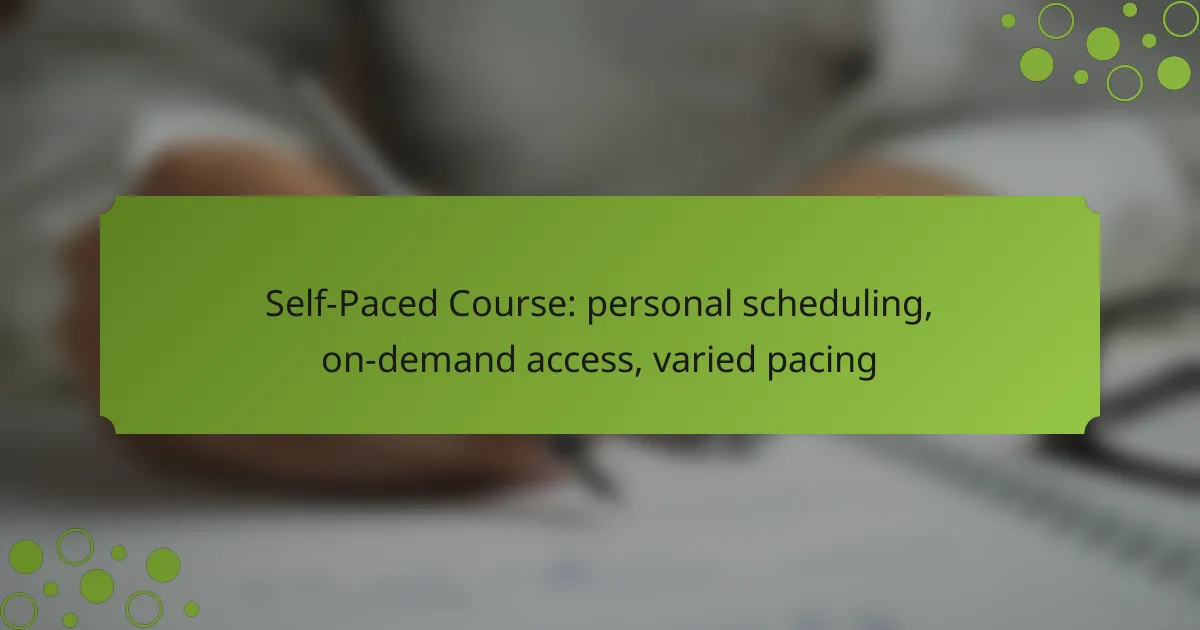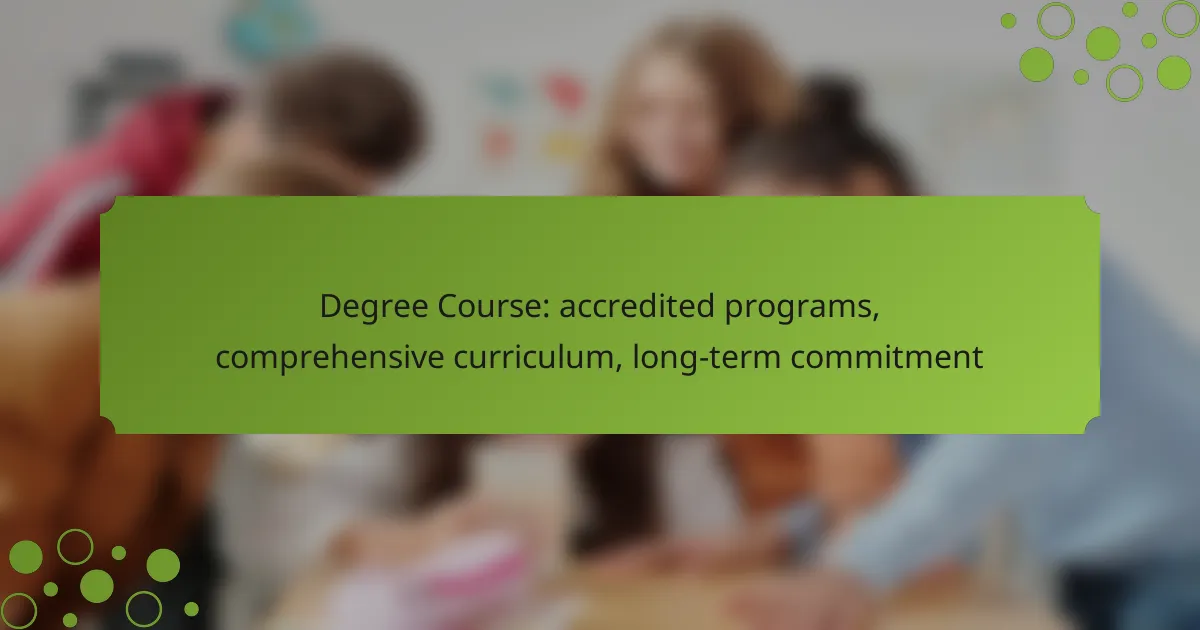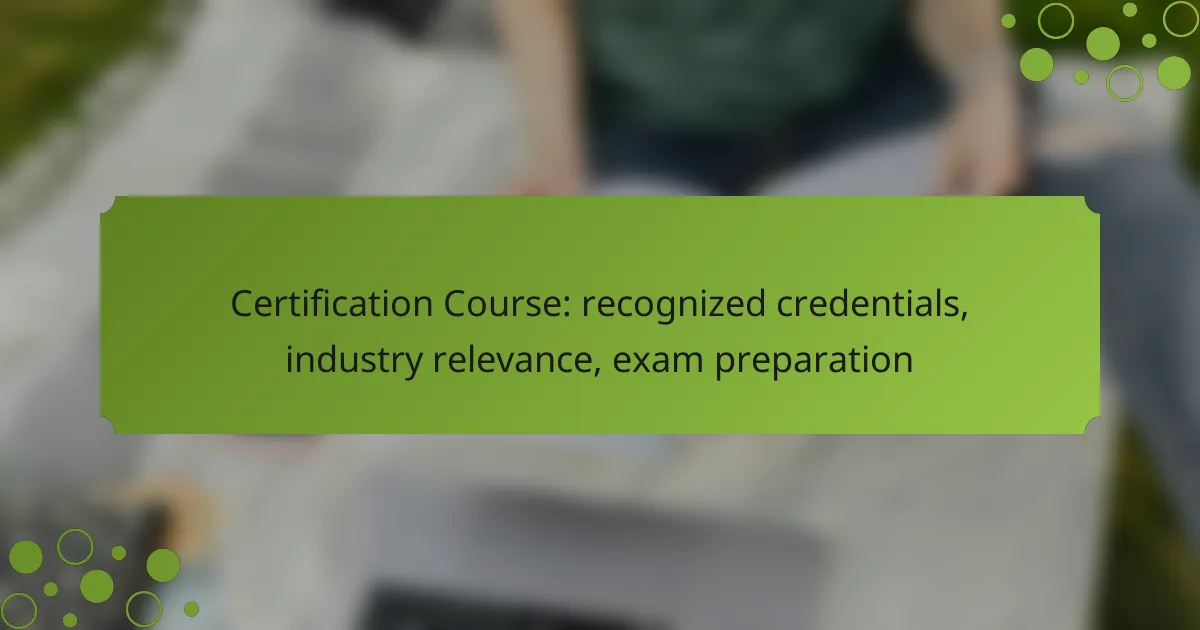Microlearning courses provide Canadian learners with the flexibility of bite-sized lessons that seamlessly fit into their busy lives. By focusing on specific topics and incorporating quick assessments, these courses enhance engagement and retention, allowing learners to absorb information more effectively.
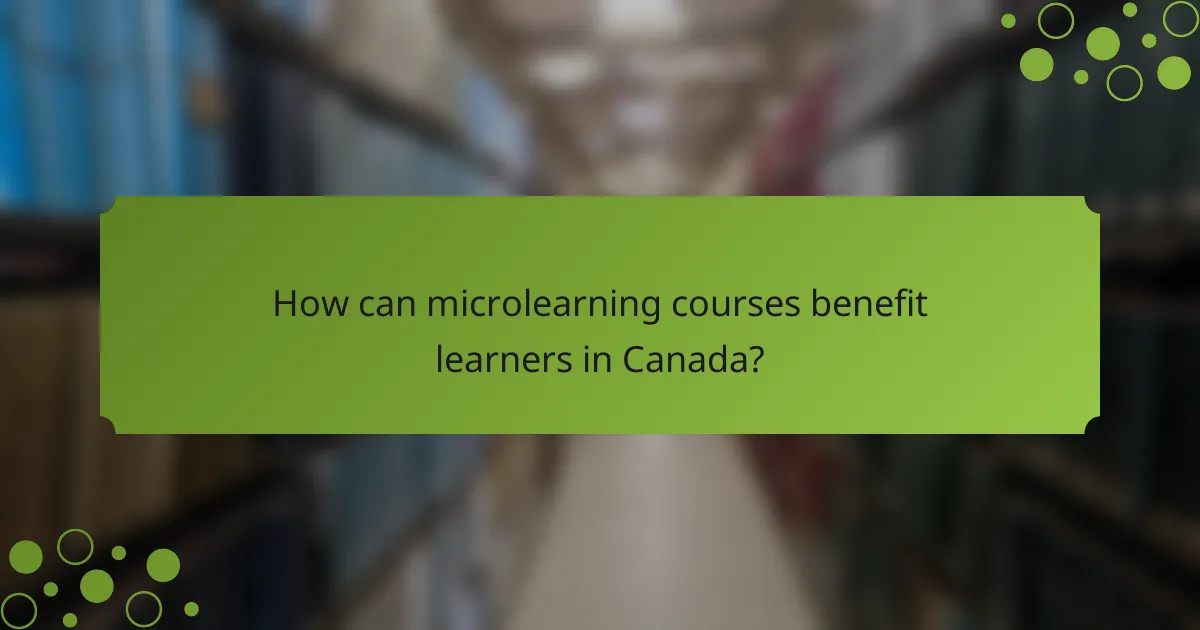
How can microlearning courses benefit learners in Canada?
Microlearning courses offer Canadian learners the advantage of concise, focused lessons that fit into their busy schedules. These bite-sized lessons enhance engagement and make it easier to absorb and retain information effectively.
Flexible learning schedules
Microlearning allows learners in Canada to study at their own pace and on their own time. With short lessons that can be accessed anytime, individuals can fit learning into their daily routines, whether during a commute or a break at work.
This flexibility is particularly beneficial for those balancing work, family, and education. It enables learners to choose when and where they engage with the material, promoting a more personalized learning experience.
Improved retention rates
Research indicates that microlearning can significantly enhance retention rates compared to traditional learning methods. By breaking down information into smaller, manageable chunks, learners are more likely to remember what they have studied.
For example, quick assessments following each lesson reinforce knowledge and help solidify concepts. This approach can lead to retention improvements of up to 80% for some learners, making it an effective strategy for mastering new skills.
Targeted skill development
Microlearning focuses on specific skills or topics, allowing learners in Canada to hone in on exactly what they need to improve. This targeted approach is ideal for professionals seeking to upgrade their skills without committing to lengthy courses.
For instance, a marketing professional might take a series of microlearning modules on social media strategies, gaining practical insights in just a few hours. This method ensures that learners acquire relevant skills quickly and efficiently, enhancing their employability and career growth.
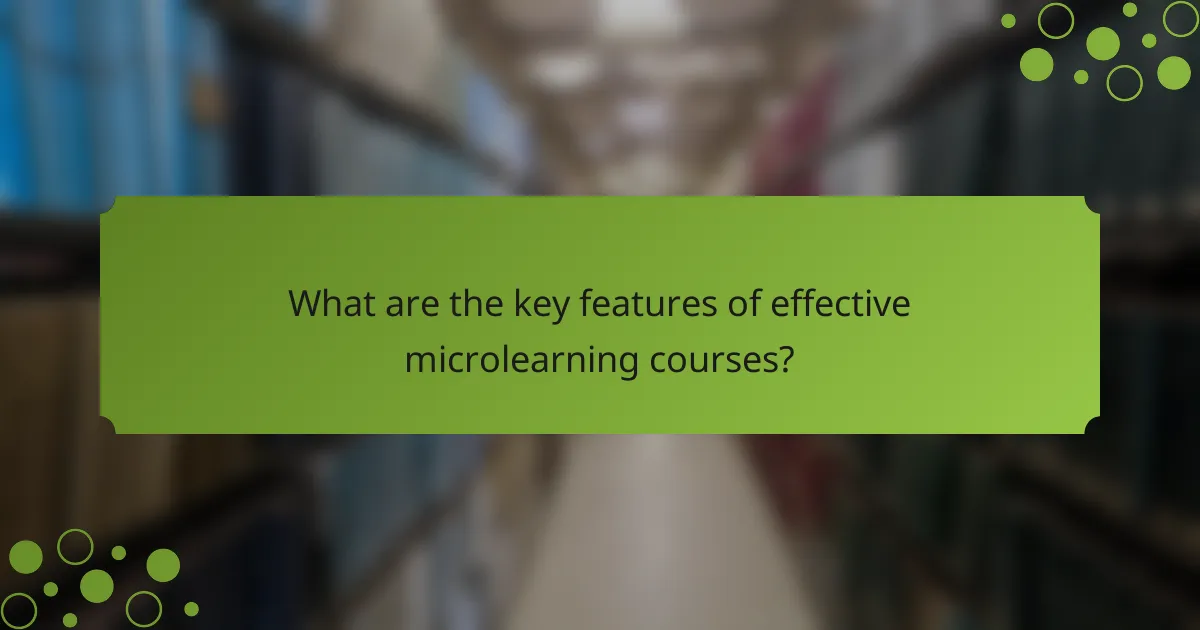
What are the key features of effective microlearning courses?
Effective microlearning courses are characterized by their concise structure, targeted content, and immediate feedback mechanisms. These features enhance learner engagement and retention by delivering information in manageable segments that can be easily absorbed and applied.
Bite-sized lessons
Bite-sized lessons are short, focused segments of content that typically last from a few minutes to around 15 minutes. This brevity allows learners to engage with material without feeling overwhelmed, making it easier to fit learning into busy schedules.
When designing bite-sized lessons, aim for clarity and focus. Each lesson should cover a single concept or skill, enabling learners to grasp and retain information effectively. For example, a lesson on a software tool might only cover one feature, such as creating a new document.
Focused topics
Focused topics ensure that each microlearning module addresses a specific subject or skill, which enhances the learning experience. By narrowing the scope, learners can dive deeper into the material without distractions from unrelated information.
To create effective focused topics, identify the core competencies or knowledge areas that are most relevant to your audience. For instance, a course on digital marketing could include focused topics like social media strategies, SEO basics, or email marketing techniques.
Quick assessments
Quick assessments are integral to microlearning, providing immediate feedback on learner understanding. These assessments can take the form of quizzes, polls, or interactive scenarios that reinforce the material covered in the lessons.
To maximize the effectiveness of quick assessments, ensure they are straightforward and directly related to the lesson content. For example, after a lesson on customer service techniques, a quick assessment could ask learners to identify the best response to a customer complaint.

Which platforms offer microlearning courses in Canada?
Several platforms provide microlearning courses in Canada, focusing on bite-sized lessons and quick assessments. These platforms cater to various learning needs and preferences, making it easier for users to engage with specific topics efficiently.
LinkedIn Learning
LinkedIn Learning offers a wide range of microlearning courses that cover professional development and technical skills. Each course is designed to be completed in short sessions, often ranging from a few minutes to an hour, allowing learners to fit education into their busy schedules.
Users can access courses on topics like project management, software development, and marketing strategies. The platform also provides personalized recommendations based on users’ career interests and goals, enhancing the learning experience.
Udemy
Udemy features a diverse selection of microlearning courses, with many focused on practical skills and hobbies. Courses typically consist of short video lectures, quizzes, and assignments, making it easy for learners to absorb information quickly.
Prices vary widely, with many courses available for under CAD 50, and frequent discounts make learning affordable. Users can also benefit from lifetime access to purchased courses, allowing them to revisit content as needed.
Skillshare
Skillshare emphasizes creative skills and personal development through microlearning. The platform offers thousands of classes that are usually short, often lasting between 10 to 30 minutes, which encourages quick learning and application.
Membership options provide access to all courses, making it a cost-effective choice for those interested in exploring multiple topics. Skillshare also fosters community engagement through project-based learning, where users can share their work and receive feedback.

How to choose the right microlearning course?
Selecting the right microlearning course involves understanding your specific learning needs and evaluating the course’s effectiveness. Focus on the course objectives, content quality, and the instructor’s qualifications to ensure a beneficial learning experience.
Assess learning objectives
Begin by identifying your learning goals. Are you looking to acquire new skills, enhance existing ones, or prepare for a specific certification? Clear objectives will help you select a course that aligns with your aspirations.
Consider whether the course offers measurable outcomes, such as assessments or certifications, which can indicate its effectiveness. Look for courses that provide a clear roadmap of what you will learn and how it applies to your personal or professional development.
Evaluate course content
Review the course material to ensure it covers relevant topics in a concise manner. Microlearning courses should focus on specific subjects and provide bite-sized lessons that are easy to digest. Check if the content is up-to-date and reflects current industry standards.
It’s beneficial to look for courses that include interactive elements, such as quizzes or practical exercises, to reinforce learning. A well-structured course will balance theory with practical application, making the learning experience more engaging.
Check instructor credentials
Investigate the qualifications and experience of the course instructor. A knowledgeable instructor with relevant industry experience can significantly enhance the learning experience. Look for instructors who have a proven track record in the subject matter.
Additionally, consider reading reviews or testimonials from previous students to gauge the instructor’s effectiveness. A strong instructor can make complex topics more accessible and provide valuable insights that enrich the course content.

What are the costs associated with microlearning courses?
The costs of microlearning courses can vary significantly based on the delivery method, content quality, and access model. Understanding these costs is essential for effective budgeting and maximizing the return on investment in employee training.
Subscription models
Subscription models for microlearning courses typically involve a recurring fee that grants access to a library of content. Prices can range from around $10 to $50 per user per month, depending on the platform and the breadth of material offered.
These models often include features such as progress tracking, analytics, and regular content updates. Organizations should consider the number of users and the specific learning needs when selecting a subscription plan.
One-time fees
One-time fees for microlearning courses usually involve a single payment for a specific course or set of courses. Costs can vary widely, often falling between $100 and $1,000, depending on the course length and depth of content.
This model can be beneficial for companies looking to address specific training needs without ongoing commitments. However, it may limit access to additional resources or updates unless further purchases are made.
Free trial options
Many microlearning platforms offer free trial options, allowing users to explore the content and features before committing financially. These trials typically last from one week to one month and can provide valuable insights into the platform’s effectiveness.
Taking advantage of free trials can help organizations assess whether the course aligns with their training goals. It’s advisable to evaluate the trial thoroughly and gather feedback from participants to inform future decisions.
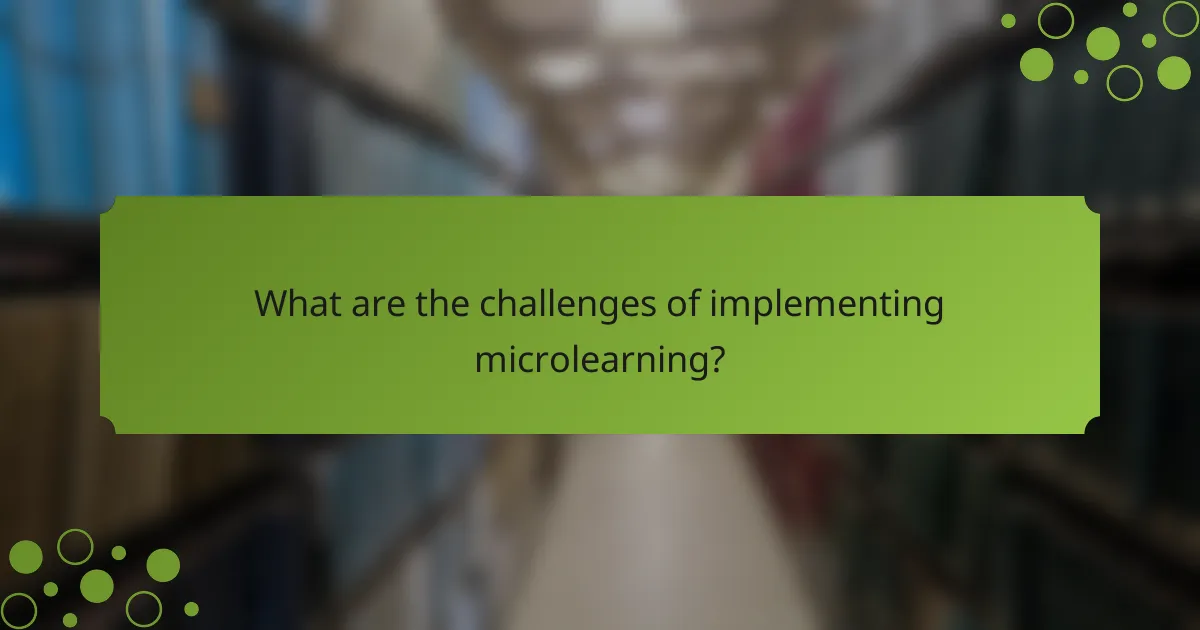
What are the challenges of implementing microlearning?
Implementing microlearning can present several challenges, including content creation time, ensuring learner engagement, and integrating with existing systems. Organizations must navigate these obstacles to effectively deliver bite-sized lessons that meet educational goals.
Content creation time
Creating microlearning content can be time-consuming, especially if the material needs to be tailored for specific audiences or learning objectives. While each lesson is short, the process of researching, designing, and producing high-quality content can accumulate significant hours.
To streamline content creation, consider using templates or repurposing existing materials. This approach can reduce the time spent on development while maintaining the effectiveness of the lessons.
Additionally, involving subject matter experts early in the process can help clarify key points and ensure accuracy, ultimately saving time during revisions and approvals.
